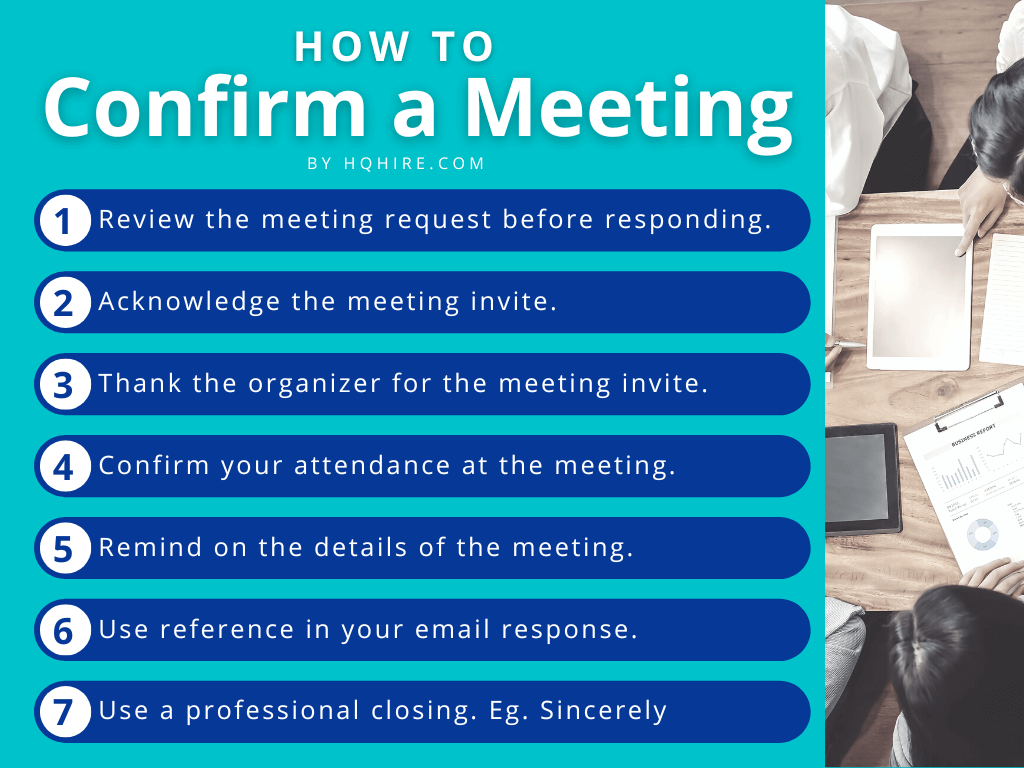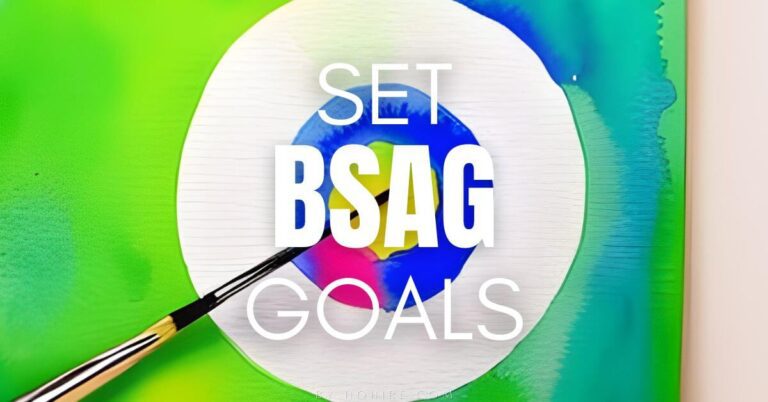When confirming a meeting, there are many things you need to take note of. By following the best practices for confirming a meeting, you will not only leave a good lasting impression, but also help you succeed easier in your career by building a stronger rapport with your correspondence.
Following these best practices for your professional email, text or phone confirmation can be benefitable for your career progression, negotiation, future meeting scheduling, rapport building and relationship strengthening.
If you have not read my previous article on “how to confirm a meeting” you should check it out before coming to this article. Regardless, here are the best practices for confirming your meeting.

General Etiquette and Practices
How far in advance should I confirm a meeting?
Confirming a meeting at least 3 days before the meeting so that the organizer will have sufficient time to prepare for the meeting is recommended for most cases.
However, the ideal timing can vary based on the context and urgency. As a rule of thumb here is the guidelines:
- Confirm at least 3 days in Advance: Generally acceptable for most cases as meeting invites are usually set 1-2 weeks in advance.
- Confirm at least 1 week in Advance: Generally for more complicated meetings or meeting that requires more preparations, these meeting invites are usually set 1-2 weeks in advance.
- Confirm at least 3-4 week in Advance: Generally for government related meetings or high level meeting that involves many stakeholders, these meeting invites are usually set 1-2 months in advance.
If unsure, consider confirming within a timeframe that allows ample preparation without being too far in advance that details might change.
Is it appropriate to confirm a meeting via text message?
While email is the standard mode of confirmation, confirming a meeting via text message can be acceptable in certain situations.
With that being said, there is a few guidelines to adhere when confirming a meeting through text:
- Ensure that the formality aligns with your relationship with the recipient.
- The text confirmation should be clear and direct.
- The nature of the meeting is less formal and involves only a few stakeholders.
For more formal or professional settings, sticking to email is often the safer choice.
What should I do if I accidentally confirmed a meeting but later realized a scheduling conflict?
If you accidentally confirmed a meeting and later discovered a scheduling conflict, immediately communicate this to the organizer.
Get started by apologizing for any inconvenience and propose alternative timings.
Honesty and prompt communication help in resolving scheduling conflicts professionally.
Meeting Logistics and Details
What if the proposed meeting date or time doesn’t suit my schedule?
If the suggested meeting time doesn’t align with your availability, it’s crucial to communicate this promptly and propose alternative slots.
- First, Reach out to the meeting organizer the immediately.
- Then, politely express your constraints and the reason why you are unavailable.
- Finally, suggest an alternative date and timings that would work for you.
This ensures a collaborative approach to finding a suitable meeting time that accommodates everyone’s schedule.
What are the best practices for confirming attendance with multiple meeting participants?
When dealing with multiple participants, consider sending a concise group confirmation email, ensuring clarity on the meeting details. Some of the best practice for multiple meeting participants are:
- Request participants to acknowledge the confirmation or inform you of any scheduling conflicts.
- Set the meeting request through a shared calendar so that everyone is aware of the available time slot for the meeting.
- Use a polling system to get an agreement on the meeting dates and time.
This streamlines the process and reduces the likelihood of misunderstandings.
Meeting Format and Specifics
Should I confirm a virtual meeting differently from an in-person one?
The fundamental principles of confirmation remain similar, for both virtual meetings and in-person meetings. Both requires a prompt response that is clear and concise.
However, when confirming a virtual meeting there are a few specific which is required for a seamless virtual meeting experience:
- Verify the chosen online platform for the meeting; Google Meet, Microsoft Teams, Zoom etc.
- Test your equipment including but not limited to your webcam, microphone, speaker
- Test your internet connection to ensure a stable internet connection.
Politely confirm your attendance and inquire about any specific virtual meeting protocols or links required for seamless participation.
Can I suggest an alternative meeting format if the proposed one doesn’t suit me?
Of course you can! You can feel free to propose an alternative as long as it is practical. You can suggest a virtual meeting instead of an in-person one or vice versa, open communication ensures that the meeting accommodates everyone’s preferences.
Just make it clear why is the alternative meeting format is requested and respect their response on your request.
Negotiate and work out the meeting format that is mutually benefitable for both of you.
Getting Additional Information on The Meeting
What if I need additional information before confirming the meeting?
If you require more details before confirming, reach out to the meeting organizer promptly.
Politely express your need for additional information or clarification on specific points.
Clear communication ensures that you have all the necessary details to make an informed decision about confirming your attendance.
What if I’m unsure about the dress code for an in-person meeting?
If the dress code is not specified, don’t hesitate to inquire about it. Send a polite email or message asking about the expected dress code for the meeting. As a general guideline, here are some suggestions:
- Better to be overdressed than underdressed.
- Better to be dressed formally than unformal.
- Better to be neat and look smart, than to be untidy and look like a rag.
- Better to wear cloths without words and images, than to wear one with words and images.
In a nutshell, you should always clarify beforehand and use common sense to ensure you present yourself appropriately for the meeting.
Join over 11,000+ achievers who are committed to achieving their career goals!






